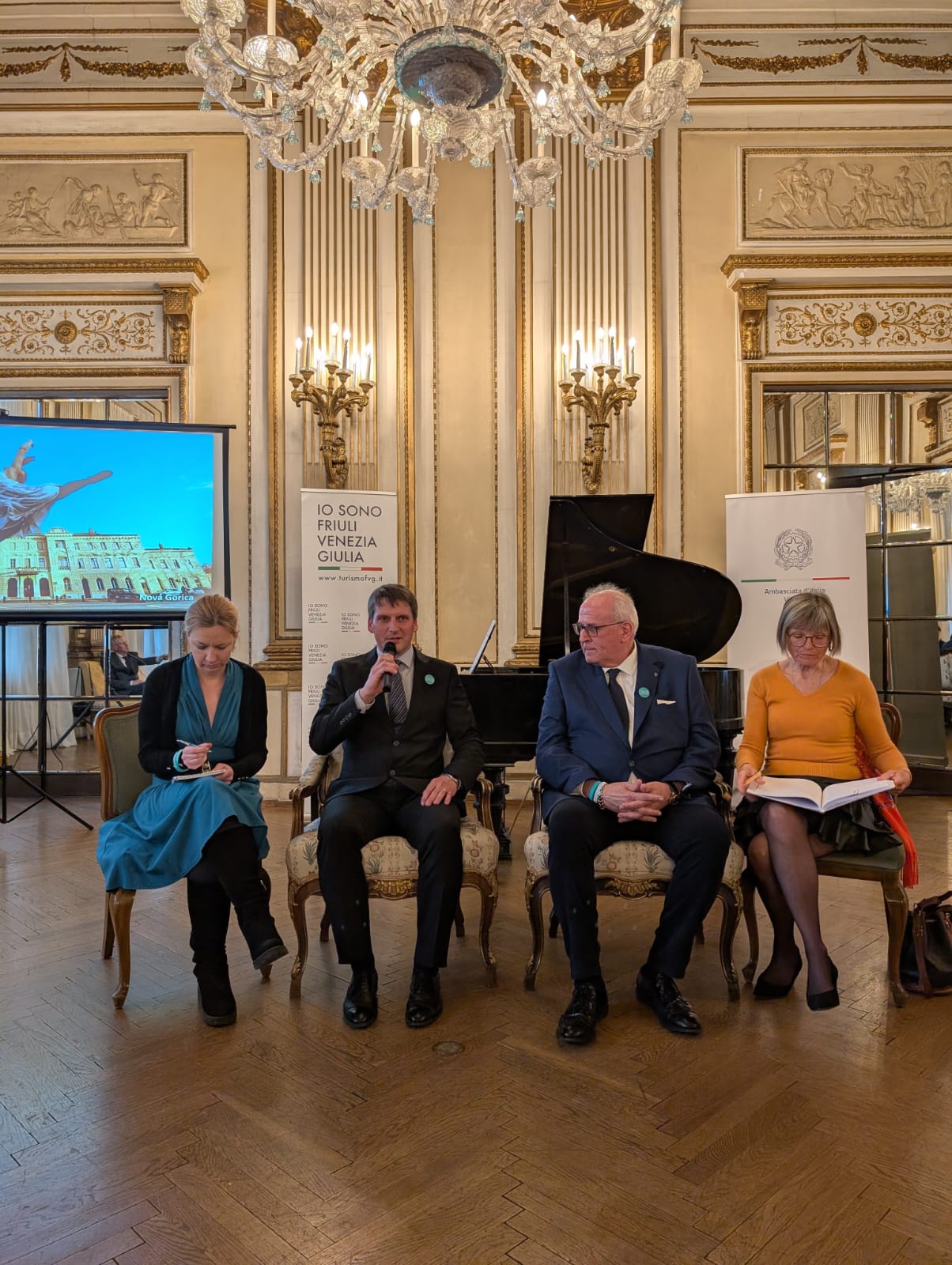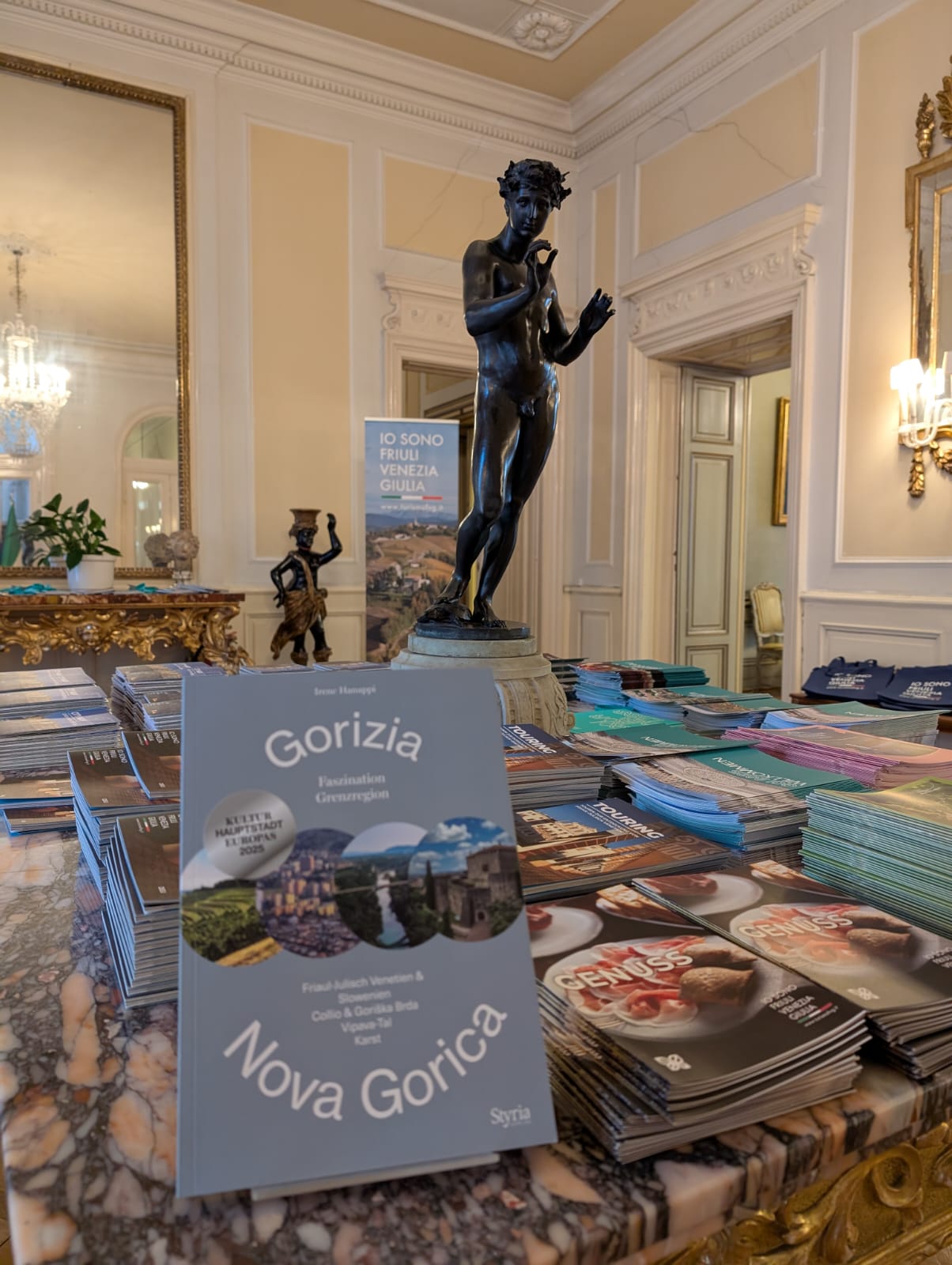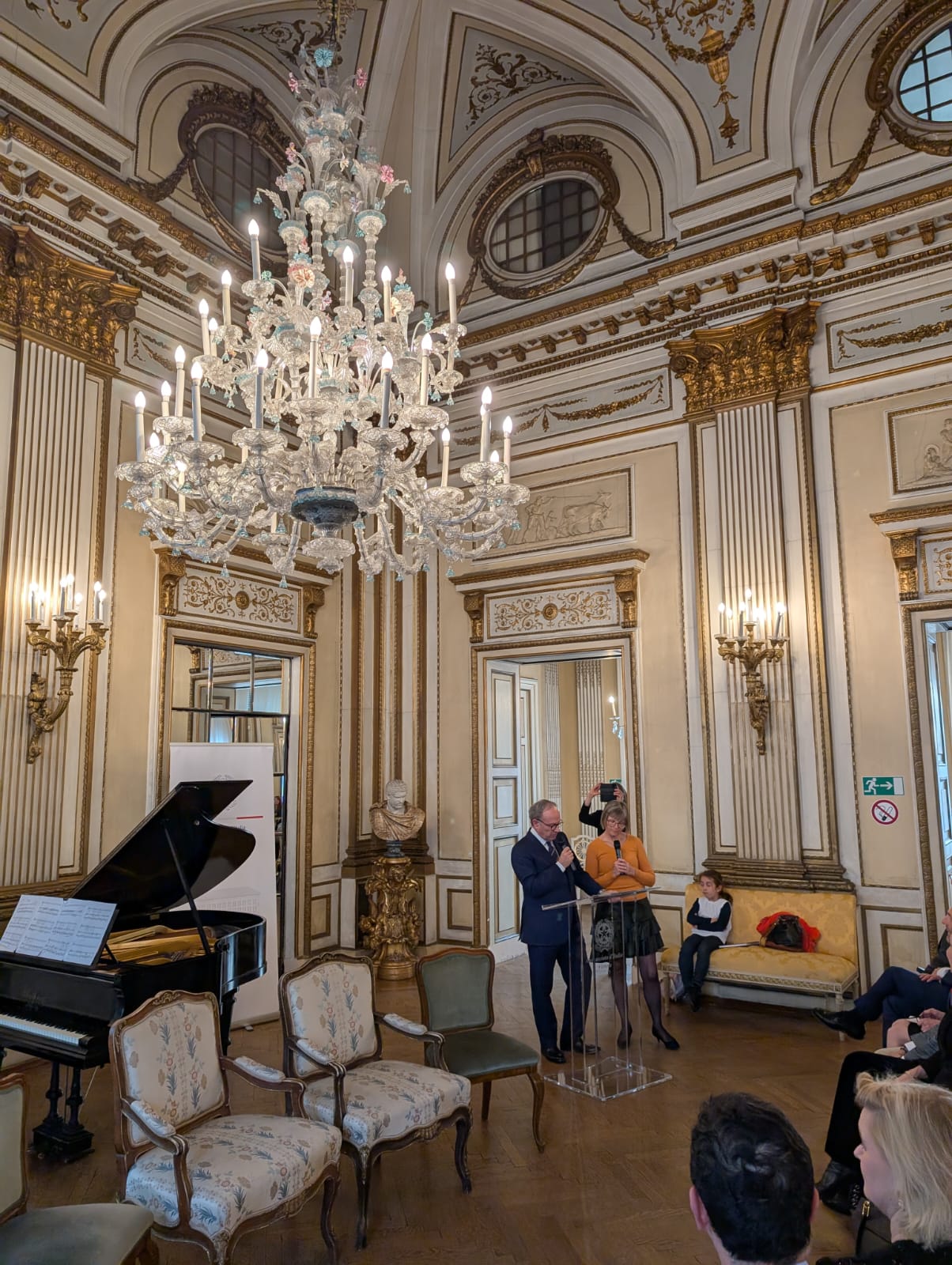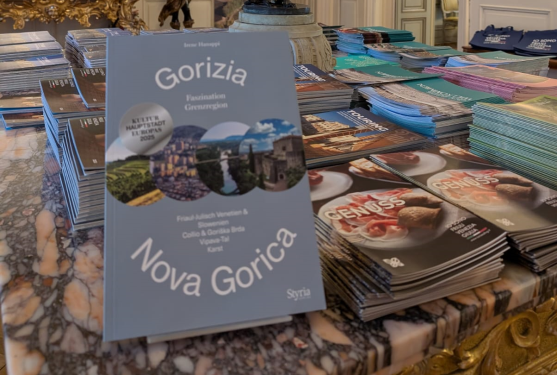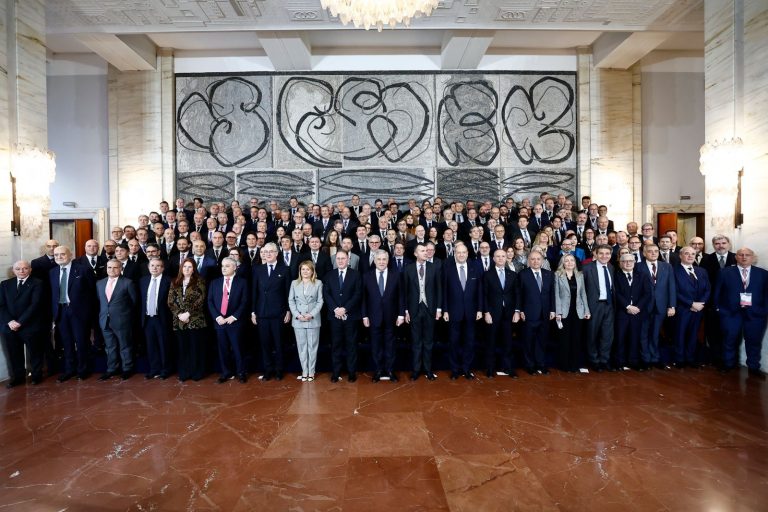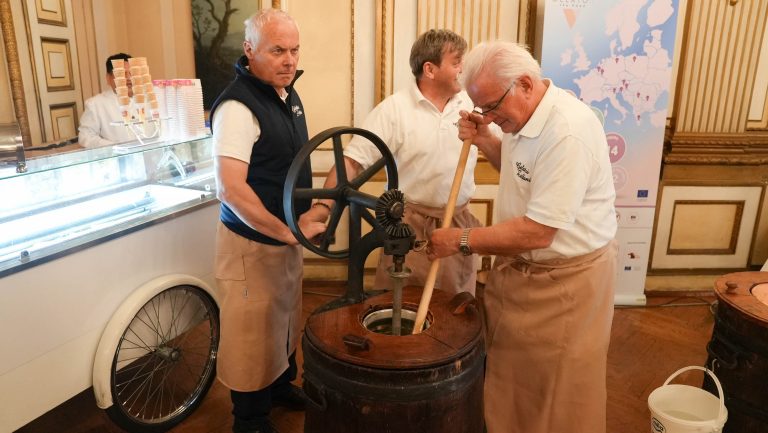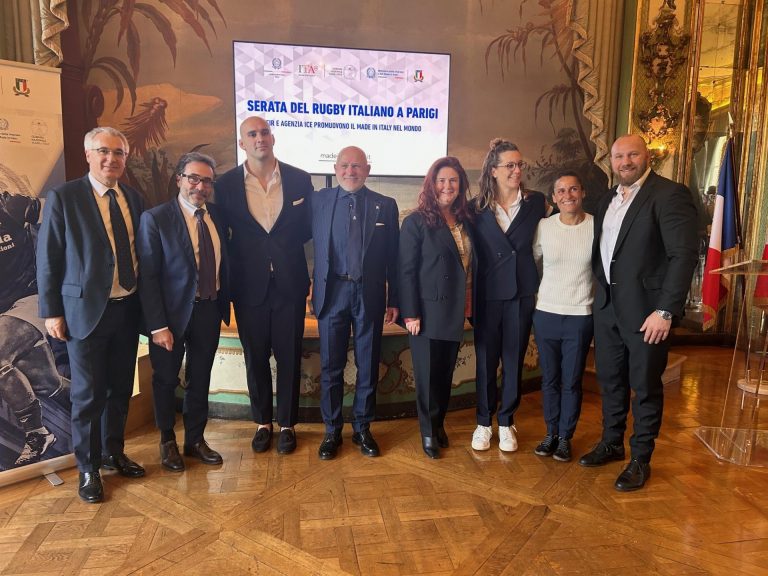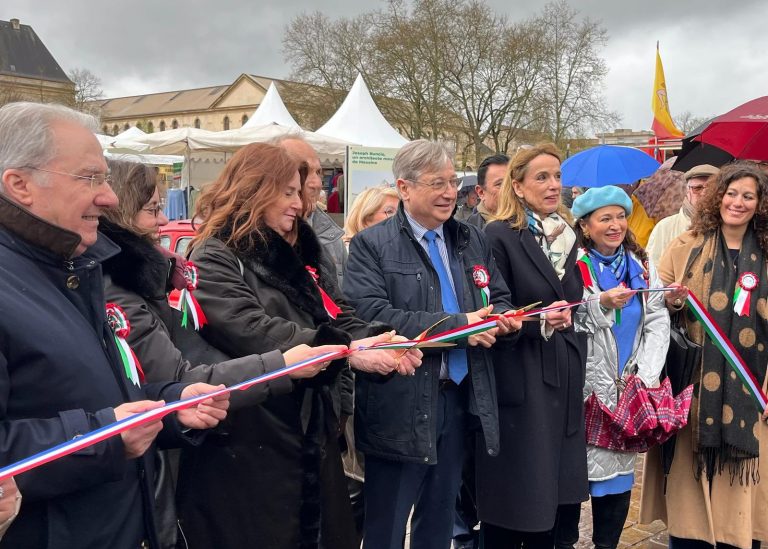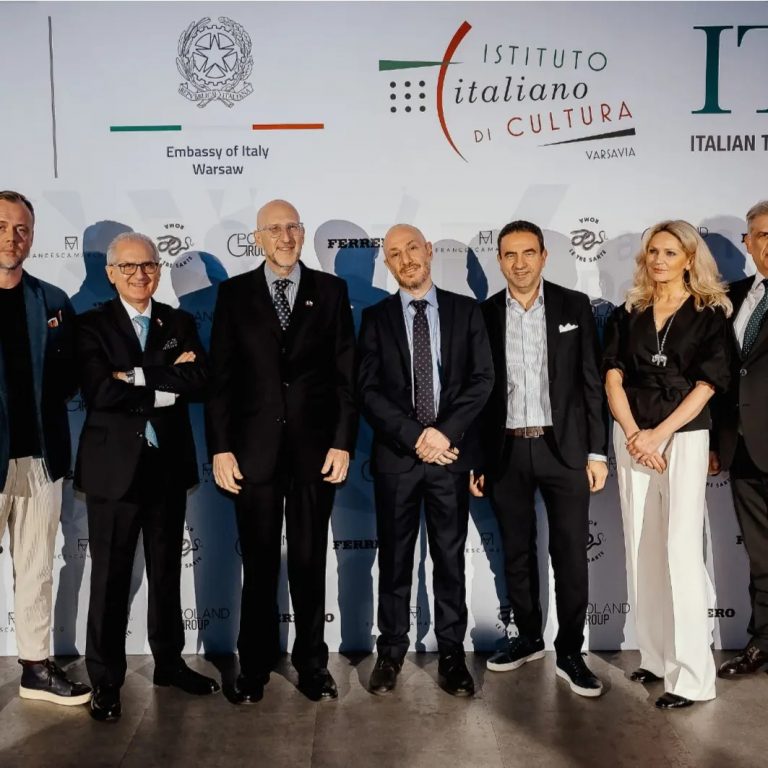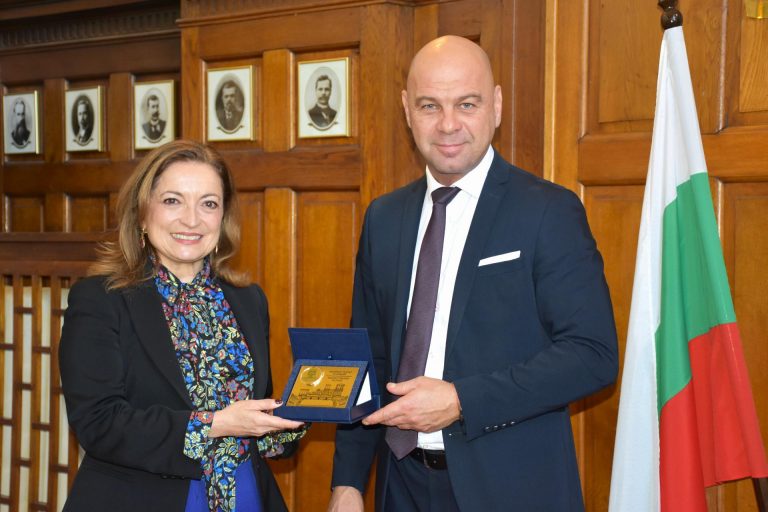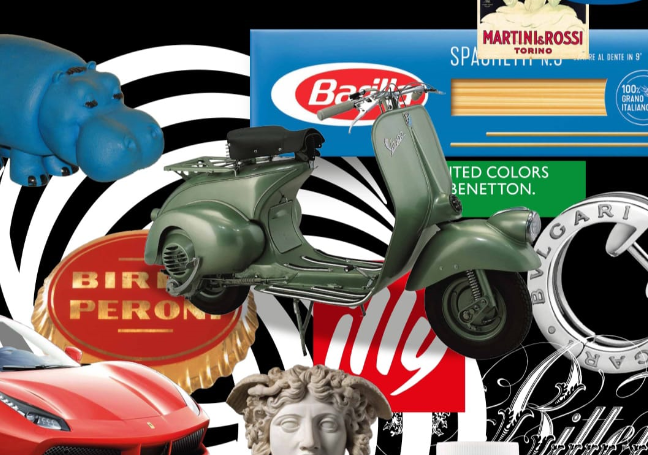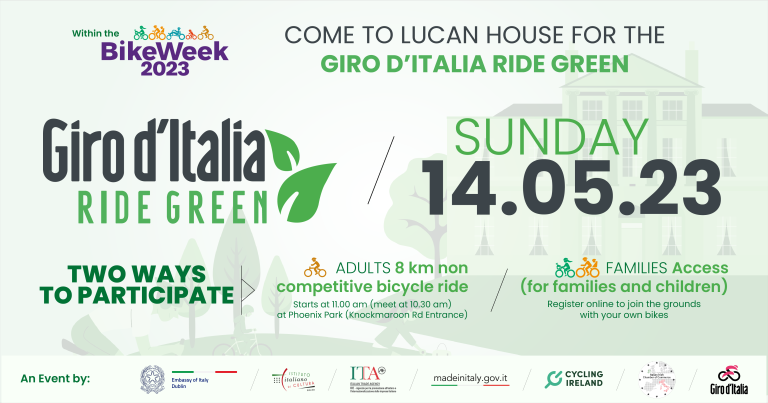Against the backdrop of Palazzo Metternich, the seat of the Italian Embassy in Vienna, the event “GO! 2025, Nova Gorica–Gorizia European Capital of Culture 2025. Music, Folklore and Food & Wine from Friuli Venezia Giulia” took place, organised by PromoTurismoFVG in collaboration with the Vienna office of ENIT (Italian National Tourist Board).
In addition to the Italian Ambassador to Austria, Giovanni Pugliese, the event was attended by the Deputy Head of Mission of the Slovenian Embassy in Austria, Barbara Kremžar; the Mayor of Gorizia, Rodolfo Ziberna; and the Deputy Mayor of Nova Gorica, Anton Harej. Also present were the Italian Ambassador to the International Organisations, Debora Lepre – who was born and raised in Friuli – and Regional Councillor Maurizio Negro.
In the speeches delivered by diplomats from both countries and representatives from the two cities, the joint nomination was underlined as a significant milestone for Gorizia and Nova Gorica, described as “a model of reconciliation between two communities long divided and marked by the dramatic chapters of 20th-century history, yet today united in an initiative that embodies the spirit of cohesion and integration at the heart of the European project”. Ambassador Pugliese, in particular, highlighted that “the example and experience of Gorizia and Nova Gorica has been made possible not only thanks to the foresight of Italy and Slovenia, but also through the EU, which has always promoted joint initiatives that helped to overcome the barriers which for so long divided the continent”. He went on to say, “Even with Austria – the host country of this event and one with deep historical ties to the Gorizia area – the EU has encouraged stronger cross-border cooperation with Italy”. The Ambassador also recalled that “Austria is this year celebrating the 30th anniversary of its accession to the EU, of which Italy is proudly a founding member,” and emphasised that “the Friuli Venezia Giulia region is one of the most successful examples of integration, where the meeting of diverse cultures – Italian, Mediterranean, Germanic, Slavic and Balkan – is particularly visible and enriching”.


